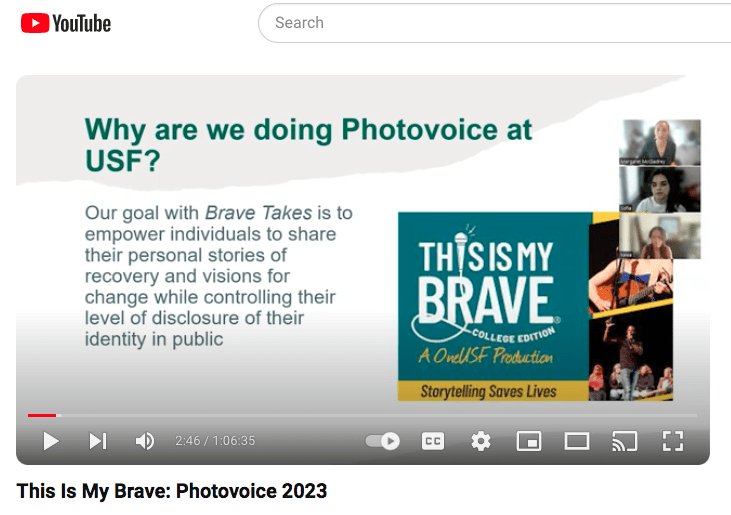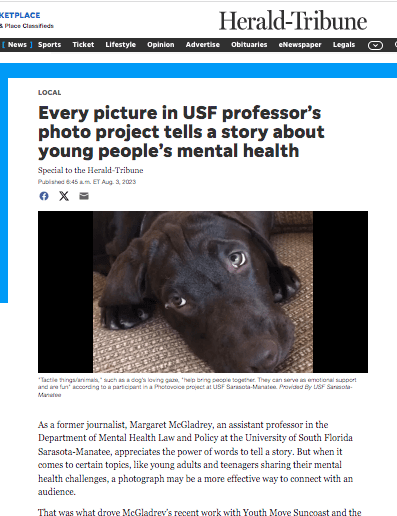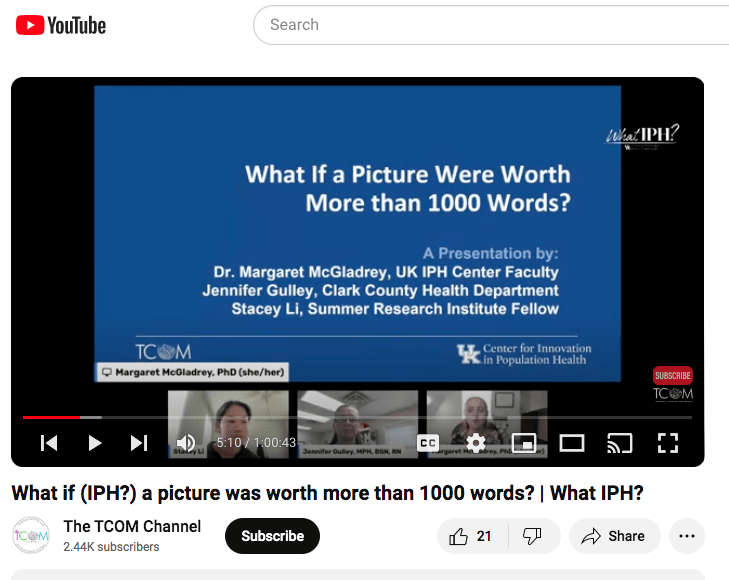By Margaret McGladrey
In an article published in Educational Research for Social Change, “Looking at Showing: On the Politics and Pedagogy of Exhibiting in Community-Based Research and Work with Policy Makers,” Claudia Mitchell, a distinguished James McGill Professor on the faculty of education at McGill University in Montreal, Canada, encourages participatory visual researchers to consider how the impact of images produced by ordinary citizens can be increased through their continued circulation. Traditionally, photovoice projects have used in-person exhibiting strategies to display images and captions to decision-makers and community partners, but Mitchell states that, “the effectiveness of exhibiting in catalyzing policy and social change and empowering participants is understudied.” Additionally, over-emphasis on in-person exhibiting as an approach to sharing photovoice projects can result in overlooking ways that different media can amplify and continually circulate photovoice products beyond an exhibiting event.
“Photography is a critical aspect of newspaper and magazine content, both print and online.”

Photovoice project at the University of South Florida
created by Communicasting, Inc., and available on YouTube.
In my recent research and practice using photovoice to understand community mental health issues, my collaborators and I have been able to leverage academic institutional marketing teams, local media, YouTube streaming and recording, and documentary production to capture the experience of photovoice exhibits and circulate them to new audiences:
Academic institution PR and local media: In partnership with the National Alliance on Mental Illness (NAMI) of Sarasota and Manatee Counties (Florida), I conducted a photovoice project with youth recruited through NAMI’s local counterpart nonprofits in juvenile justice and behavioral health to illustrate how the pandemic influenced young people’s needs and expectations for peer support services. All of the photo and caption combinations created by the participants were placed online, along with the PowerPoint from our online presentation to the Sarasota County Behavioral Health Stakeholders Consortium in May 2023 as part of mental health awareness month. The online postings highlighted each group’s selections for photos/captions representing their top three supports and top three concerns around mental health:
- Mental Health Month Presentation to the Sarasota County Behavioral Health Stakeholders Consortium
- Photos and captions from the Healthy Teens and Young Professionals Photovoice Group
- Photos and captions from the Teen Court of Sarasota Photovoice Group
- Photos and captions from the You Are Not Alone Center Young Adult Photovoice Group
- Photos and captions from the New College of Florida Undergraduate Student Photovoice Group
Although the marketing staff member from my academic institution was not able to attend the live exhibit presentation to decision-makers, the placement of photovoice products online gave him the materials he needed to interview me and write a news release about our project. This news release was then picked up by our local newspaper. When presented in news release format, the visual nature of photovoice projects is attractive to local media outlets because photography is a critical aspect of newspaper and magazine content, both print and online.

Documentary production: I received a grant to evaluate the comparative effects of photovoice and a live storytelling program called This Is My Brave in reducing campus stigma related to mental health and addiction. This project involved facilitating photovoice groups with University of South Florida (USF) students, staff, and faculty, and sharing their photos/captions in an exhibit with posters and postcards at the live show for This Is My Brave in May 2023 on the USF campus. To extend data collection on whether and how photovoice and This Is My Brave help reduce behavioral health stigma among participants and audiences, we worked with a professional documentary producer, Communicasting Inc., to create a video describing the photovoice method and presenting the final photo/caption products. In the documentary, undergraduate student researchers who had taken analytical notes on photo discussion sections “reenacted” participant experiences with photography and discussion, which allowed participants to remain anonymous. The documentary not only provides a “how-to,” i.e., walking audiences through the photovoice process, but also shows how the process led to the gallery of final photo/caption combinations and calls to action. Professional and informal videography at in-person photovoice exhibits can serve to document the event as well as create another type of media to circulate.

YouTube streaming and recording: In my role as faculty for the University of Kentucky’s Center for Innovation in Population Health, I was invited to give a presentation on another photovoice project with a rural Kentucky health department in support of their community health assessment process for an ongoing series of research talks on the Center’s YouTube channel. Presentations that are broadcast live on YouTube circulate to live audiences, as well as to audiences who discover the content at a later date. This presentation provided an opportunity for my local health department collaborator and student researcher to co-present our photovoice project approach and findings using an enduring communication medium conducive to sharing with participants. Because digital broadcasters often rely on interviews to generate content, other photovoice projects might benefit from identifying and reaching out to YouTubers and podcasters who share their content-area interests.
Please be in touch if you’d like to learn more about my work with photovoice and discuss strategies for leveraging various media channels to more widely circulate your photovoice projects!

Margaret McGladrey, PhD is a Research Assistant Professor in the Department of Health Management and Policy at the University of Kentucky (UK) College of Public Health (CPH) who supports the work of the TCOM Implementation, Development, and Educational Support (TIDES) program, which trains child welfare and behavioral health practitioners on using the Center for Innovation in Population Health’s outcome management tools. Dr. McGladrey specializes in participatory health research, community engagement, and quality improvement in partnership with a wide variety of agencies and practitioners, including local health departments, cooperative extension, county and regional jails, child welfare agencies, treatment courts, and philanthropic, arts, social services, and recovery community nonprofit organizations.
